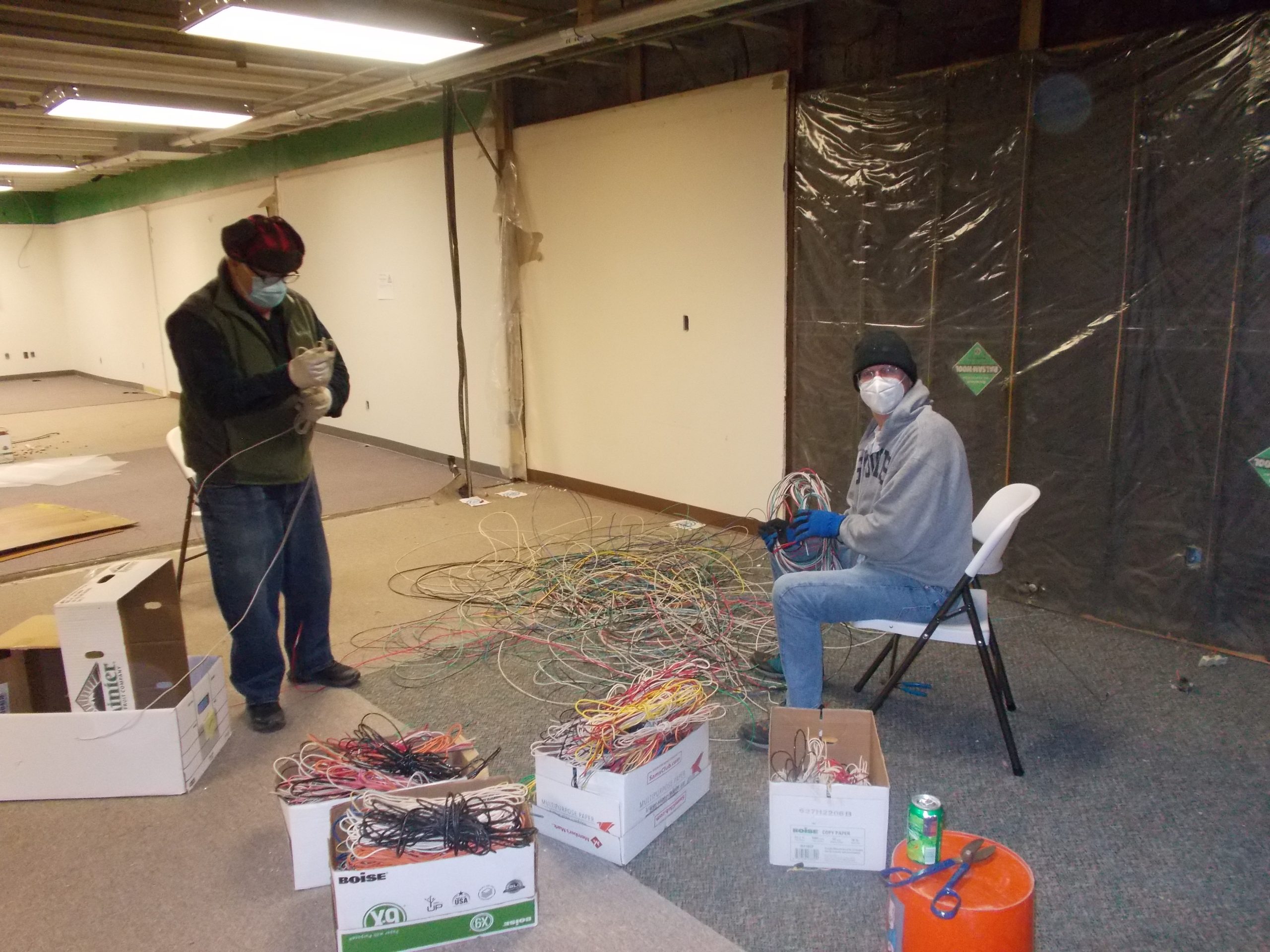
On a bright sunny afternoon in early January 2022, a small group of volunteers got together at the Great River Children’s Museum (GRCM) in downtown St. Cloud to help with deconstruction and salvage. The emerging nonprofit is working to get its site ready to serve children of all ages across the central Minnesota region and beyond. Donated to the organization in December 2018 by Liberty Bank Minnesota, the building is a compilation of structures dating back to the early 1930s. The location’s rich history shows the key role it has played and continues to play in the community, housing everything from a chicken hatchery and grocery store to a car dealership, print shop and, more recently, a bank.
The determined efforts of GRCM’s board and staff, both paid and unpaid, to disassemble and salvage as much of the building’s material assets as possible serves as a role model for other property owners and developers. Their success in keeping thousands of pounds of materials in use and out of landfills highlights the value of building reuse and the structural sustainability that is often unrecognized but is typically found in many older and existing buildings. The additional revenue garnered for the organization is an added benefit. Recycling pays!
Among the tasks for the volunteers were hauling diffusers and other metal pieces from the reworked HVAC (heating, ventilation, and air conditioning) system to an outside dumpster destined for metal recycling, disassembling fluorescent ceiling light fixtures, hauling and stacking fluorescent tube lights, bundling electrical wire for transport to recycling, and removing electrical panels and conduit boxes. Museum board members and volunteer staff were onsite helping organize the efforts and were eager to get things done and ready for the contractor scheduled to arrive early the next morning. The tasks ranged from simple to complex, making for an easy fit with all skill levels (mine being solidly in the unskilled labor department). The event showed how with a little effort and determination, a lot can get done and much can be saved.
The time and effort of the volunteers was greatly appreciated by the museum and the results of that weekend’s work were shared with everyone. Four loads of salvaged building materials were hauled to recycling, generating $1,350 in revenue for the museum. This is added to the over 35,000 tons of materials that had already been salvaged and recycled by the end of the previous year. The bundled wire, metal and other deconstructed building materials that were recycled instead of landfilled had both an economic and environmental impact on the community. Through their building project, GRCM is helping to flip the thinking from automatic demolition to seeing deconstruction and salvage as a viable option. Building disassembly and material salvage keeps useable materials out of landfills and helps better protect the environment. The labor intensive process also provides jobs and job training.
Perhaps St. Cloud’s location along the mighty Mississippi River or the area’s abundant and well-loved greenspaces – from nearby Lake George and Clark Field to the public landscapes of the city’s newest local historic district, the Southeast St. Cloud New Dealt-Built Landscapes Historic District – or the examples of other local reused and repurposed buildings in the area have helped to encourage the level of care for community and the environment showcased by the museum’s efforts. Whatever the reason, more power to them!
~Ann Marie Johnson, Preservationist



